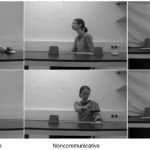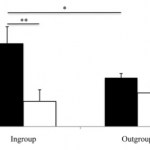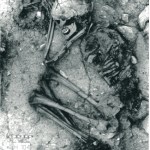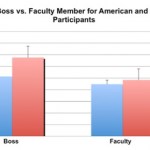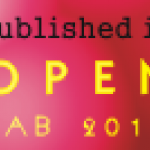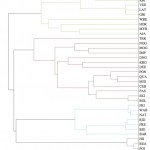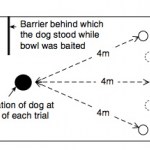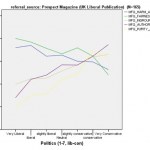Human infants have one important job during the first years of life, and that is to learn about the world and their culture from their parents and other caregivers. But what is learning? I've previously written that Hungarian developmental psychologists Gergely and Csibra have defined learning as the acquisition of new, generalizable knowledge that can later be used within a new context. Further, they have posited that evolution has prepared humans to learn generalizable knowledge from their caregivers. They proposed an elegant hypothesis: that a specialized innate pedagogy mechanism - called…
SBeditors
What is learning?
Most psychologists (indeed, most people in general) would agree that learning is the acquisition of new knowledge, or new behaviors, or new skills. Hungarian psychologists Gergely and Csibra offer a deceptively simple description: "Learning involves acquiring new information and using it later when necessary." What this means is that learning requires the generalization of information to new situations - new people, objects, locations, or events. The problem is that any particular piece of information that a human or animal receives is situated within a particular context…
There's a very well-known experiment in developmental psychology called the "A-not-B task." The experiment goes something like this: you, the experimenter, are seated opposite a human infant. Within the reach of both you and the child are two boxes: box "A," and box "B." You hide a toy in "A," in full view of the infant. As expected, the infant reaches for "A" to retrieve the toy. You repeat the process several times. Each time you hide the toy in "A," and each time the infant reaches for "A" to find the toy. Experimental set-ups like this are extremely common in infant and animal studies.…
First, the first couple of reviews of the 2010 anthology are now out: by Dr. Alistair Dove at Deep Sea News and by Ariel Carpenter at USC News. Check them out. If you have read the book and have a place to publish a review, we'll appreciate it - just send us the link.
Second, I am very excited to join Bora in announcing the Guest Editor for the 2011 edition: Jennifer Ouellette (blog, Twitter). I am sure that Jennifer will do a fantastic job putting together the sixth edition of the anthology! I couldn't be more thrilled.
Third, after five years of self-publishing the anthology through Lulu.…
I've been a bit remiss in posting much this week, mostly because I had to prep a guest lecture (from which I just returned, and it was awesome thankyouverymuch) on the Domestication of Social Cognition.
In the meantime, now that spring is here, baby animals are starting to pop up all over the LA Zoo. I haven't managed to make it to the zoo yet to see them, but in the meantime, enjoy these pictures (click each one to enlarge) provided by the zoo itself.
This baby koala (not a bear! koalas are marsupials, like kangaroos) was actually born on July 6, but because koalas, like kangaroos, spend the…
You know that old phrase, "monkey see, monkey do"? Well, there might be something to it, except that chimpanzees aren't monkeys. (Sadly, "ape see, ape do" just doesn't have the same ring to it.) A new paper published today in PLoS ONE has found evidence that chimpanzees have contagious yawning - that is, they can "catch" yawns from watching other chimpanzees yawning - but (and here's the interesting part) only when the chimp that they're watching is a friend.
At first, scientists thought that contagious yawning was the result of a releasing mechanism - in other words, seeing someone yawn…
You kept submitting your posts all year long and watching, every Monday, to see which other posts were also entered.
Then we closed the submission form.
Then we made you wait a month of "electoral silence" while the judges went through three rounds of judging, until we announced which 50 essays, plus poems and cartoons, made it into print.
Then, at Science Online, we announced the gorgeous new cover art.
But now - what you have been waiting for so long:
The Open Laboratory 2010, the collection of best writing on science blog for the year, is finally up for sale!
Buy one for yourself, buy…
Welcome to the third installment of Animal Territoriality Week. See part 1 here, and part 2 here.
In 1994, a disease called sarcoptic mange swept through Bristol's fox population, severely crippling the population and killing most of the individuals. Professor Stephen Harris of the University of Bristol, who had been studying the movements and territories of those foxes, noticed that as the animals in one territory died, neighboring foxes were able to colonize the vacant areas in 3-4 days. He suspected that this was because the scent marks of the foxes remained active for 3-4 days, but didn'…
Welcome to Territoriality Week! Every day this week, I'll have a post about some aspect of animal or human territoriality. How do animals mark and control their territories? What determines the size or shape of an animal's territory? What can an animal's territory tell us about neuroanatomy? Today, I begin by asking two questions: first, what is the functional purpose of establishing territories? Second, to what extent can we apply findings from research on animal territorial behavior to understanding human territorial behavior?
It seems that everyone becomes an amateur animal behaviorist…
There is a small bit of land, only about a square kilometer, that has added a new wrinkle to the story of animal domestication. This bit of land located in Northern Jordan, just southeast of the Sea of Galilee near the banks of the Jordan River, is home to an archaeological site known as 'Uyun al-Hammam. One key feature of this site, excavated in 2005, is a burial ground containing the remains of at least eleven humans in eight different gravesites. The early humans were buried here sometime during the pre-Natufian period, or around 16,500 years ago.
Layout of the 'Uyun al-Hammam site, and…
"At home, a young man should be dutiful towards his parents; going outside, he should be respectful towards his elders." -Confucius (Chinese philosopher, 551-479 BCE)
"Your real boss is the one who walks under your hat." -Napoleon Hill (American author, 1883-1970)
Those two quotations reflect a cultural difference in how people construct their own conceptions of who they are and how they interact with others. That the particular culture an individual is raised in helps to determine the way they understand the self is clear. Western cultures, such as in America or the UK, tend to focus on…
Part 2 of the n00b Science Blogging 101 series concerns the big questions of blogging: audience, purpose, and so on. You can find part 1 here, in which I discussed my own experiences with blogging to provide adequate context for this and the remaining posts in the series.
What audience do you have in mind when you write and why? Are you writing to people already interested in science, or do you also want to get people interested in science?
This is really two questions. The first concerns who reads this blog, and the second concerns who I wrote this blog for, and the second question is far…
Earlier today, I had the pleasure of speaking via Skype with Dan Simons's graduate-level science writing class. We talked about the ins and outs of academic blogging, and the nature and ecosystem of science communication online, and the students asked some terrific questions.
I had asked Dan to ask his students to compile some questions in advance, so that I might at least pretend to be prepared, and the questions they sent were so good, that I've decided to commit my answers to the relative permanence of the sciblogosphere. (Also, there was good feedback to a similar post that I wrote…
Most dog owners think that their dogs can tell what they're thinking. Or at least, in some sense, they will insist that their pet pooches can sense their emotions, and respond accordingly.
Indeed, a man by the name of Karl Krall (say that three times fast) thought that there exist some sort of psychic connections between man and animal. And he thought he could prove it.
In this telepathy experiment between human and dog Karl Krall (on the right) tried to detect the thinking radiation he assumed to flow between the two. Krall was a rich dealer in diamonds who had founded his very own…
It's here! After more than a month of reviewing, I am pleased to announce the list of posts that will be included in this year's edition - the fifth - of The Open Laboratory!
In no particular order:
Givin' props to hybrids by DeLene Beeland
The decade the clones came: Beware the mighty Marmokrebs! by Zen Faulkes
Can seabirds overfish a resource? The case of cormorants in Estonia by Hannah Waters
The Data Speak by Andrew Thaler
Testing the flotation dynamics and swimming abilities of giraffes by way of computational analysis by Darren Naish
Shark week! by EcoPhysioMichelle
Size really does…
Scientists thought they had a pretty good handle on the social interactions of bottlenose dophins (Tursiops). They've used the term fission-fusion dynamics to describe dolphin (and non-human primate) society and so far it has served researchers well. Fission-fusion societies among dolphins are characterized by two levels of social hierarchy: groups of two or three related males ("first-order alliances") which work together to guard one or more females from other males, and larger teams comprised of multiple related first-order alliances ("second-order alliances") which cooperate to "steal"…
This week marked the release of Brian Switek's (blog, twitter) first book, Written in Stone. I got my hands on a review copy a few weeks ago, and I have nothing but good things to say about it. (Disclaimer: I was provided with a free review copy of the book, without any expectation that I'd review it on my blog or elsewhere.)
Written in Stone is a highly-accessible, engaging book which takes the reader simultaneously through the story of vertebrate evolution and the story of the scientists who - quite literally - uncovered it. The book's main success might be in its seamless transition back…
Does Fido see the cup as half full? Is your dog pessimistic? Last time we saw headlines like these they were about a certain barnyard animal. Remember "Pampered pigs 'feel optimistic'"? I didn't like it then, and I don't like it now.
Roughly half of the population of dogs in the UK are likely to - at some point in their lives - exhibit "undesirable separation-related behavior (SRB)." These are things that sometimes happen when left alone, like barking, chewing up or otherwise destroying objects, and urinating (or worse!) inside the house. While some owners view these behaviors as fine and…
Ravi Iyer, a graduate student and colleague of mine at the University of Southern California in social psychology, blogs regularly about moral psychology at polipsych.com, and tweets from @ravi_polipsych. He collaborates with others on YourMorals.org, where interested individuals may participate in research in political and moral psychology. I asked him to contribute a guest post about his work.
As a moral psychology researcher, I was very excited when Jason wrote that his posts this week would cover moral psychology, and I have enjoyed his previous posts concerning the evolution of morality…
Quandaries such as those involving stealing a drug to save a spouse's life or whether or not to have an abortion have historically dominated the study of the development of moral thinking. The predominant research programs in psychology today use dilemmas in which one choice is deontologically correct (it is wrong to rotate a lever that will divert a train and kill one person instead of five), and the other is consequentially correct (kill one person if it will save five others).
It is not surprising that psychologists have followed philosophers in proposing definitions for morality that…


